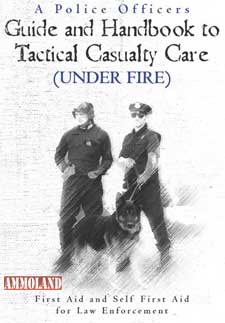

TARPON SPRINGS, Fla. –-(Ammoland.com)- Anyone who has been around hand guns for any amount of time can tell you the importance of a weapon reload.
A couple of the obvious concerns are usually how fast can my reload be accomplished? How can I make my reload even faster?
With this you will get the several schools of thought that mention spare mag placement and orientation.
However, how often do we talk about when and where? When should you take that split second to conduct a mag exchange and where is the best possible place for me to accomplish it?
While on the range in our sterile environments, we try to create the stress needed to get officers [and shooters] to build that muscle memory needed to conduct this motor skill. In doing so, we focus primarily on a mag exchange that results in a properly seated magazine producing sustainable firepower.
We often mention that we have to be mobile and we try to instill the two basic types of reloads:
- Combat
- Tactical reloads
The combat reload is simply conducting a magazine exchange while still under the threat of hostile fire. This type of reload focuses primarily as discussed before (a properly seated magazine producing sustainable firepower). With a combat reload, your moving to some sort of appropriate cover as fast as you humanly can!
The tactical reload is often conducted after that initial confrontation, where the officer [or shooter] has selected appropriate cover and has the mental ability to realized that they a mag exchange is needed. With a tactical reload, your focused on secondary subjects (keeping your eyes on the bad guy), your weapons status and maintaining that exchanged mag.
Regardless of your situation, you’re going to react to your training. This is why instructors spend countless hours trying to tailor their training so that their students have something to refer back to. Understanding how you will react under stress is an import factor. Exposure to scenario based training can definitely enhance or maintain this perishable skill.
So, you ask your self, what should I do if I can’t remember which type of reload to do?
The Answer to that one is simple, If your gun locks back, FIX IT! and keep moving! Don’t get locked back on what to do!
About the Author:
Rafael Navarro is a deputy trainer at the Pinellas County Sheriff’s Office. He served four years with the SWAT team and three years in the community policing unit. Navarro is a certified evaluator and instructor for defensive tactics, ASP, firearms, vehicle operations and more. He retired as an SFC/E-7 after serving 21 years in the United States Army, and now works as an adjunct instructor at St. Petersburg College. His Book “A Police Officers Guide and Handbook to Tactical Casualty Care (Under Fire)” ia available here: https://tiny.cc/d50tu
